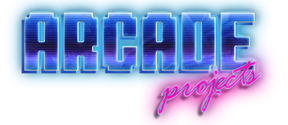Basically what I'm going for is something that looks as close to the original CD silk screen as possible, looks like they had a base CD substrate colour (silver), then a base colour (black), then a highlight colour (red or orange or whatever)
Base colour
Hilight colour
The CD itself (shiny silver)
Replicating this with PCB manufacturing (which is designed to solve a completely different set of challenges) is fun
There are a lot of restrictions around what silkscreen colour you can have with what board, pretty much the only way to get black silkscreen is to have white solder mask
Normally the mask covers the whole board, but its possible to define the mask as its own layer and let the substrate show through.
Silk screen colour = white
Solder mask colour = black
The colour of the substrate itself = copper
So using FR4 would look something like this - which is cool, but not the look im going for with the "New Generation" theme (although it would look cool for a "3rd strike" Theme.

What I want it to look like is this - so looking at how I can take the unmasked copper layer, define it as a footprint, and get them to tin the copper and make it silver...

Oh and then there is the minor matter of moving all the components around that it actually, you know, works...
Edit: realised I was trying WAAAAAAAY to hard here - any exposed copper is going to get tinned whether I like it or not in the ENIG/HASL treatment phase anyway, so problem solved

















